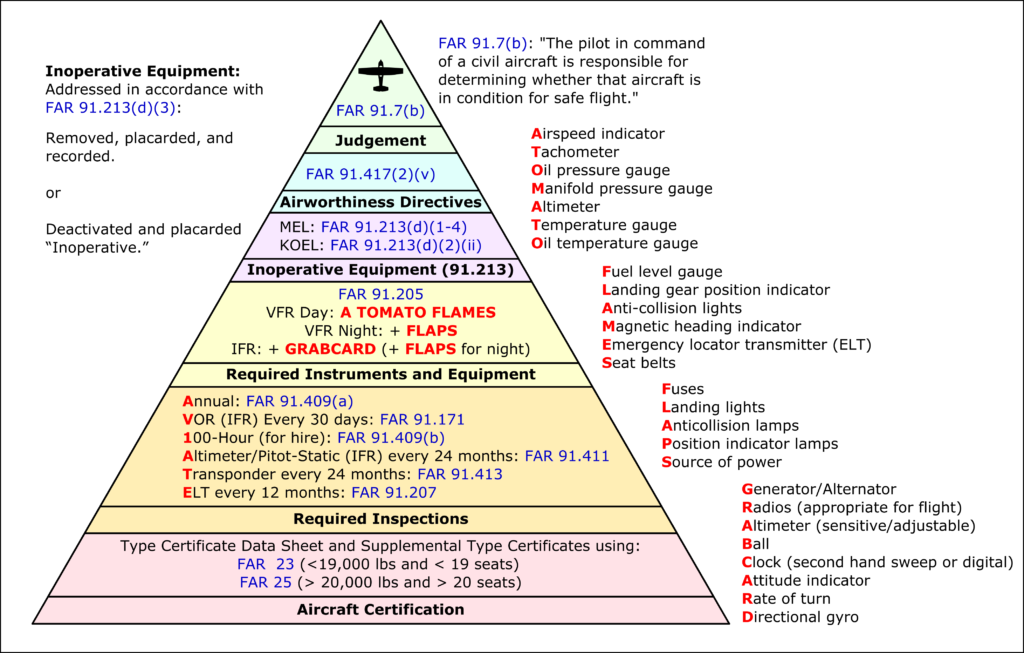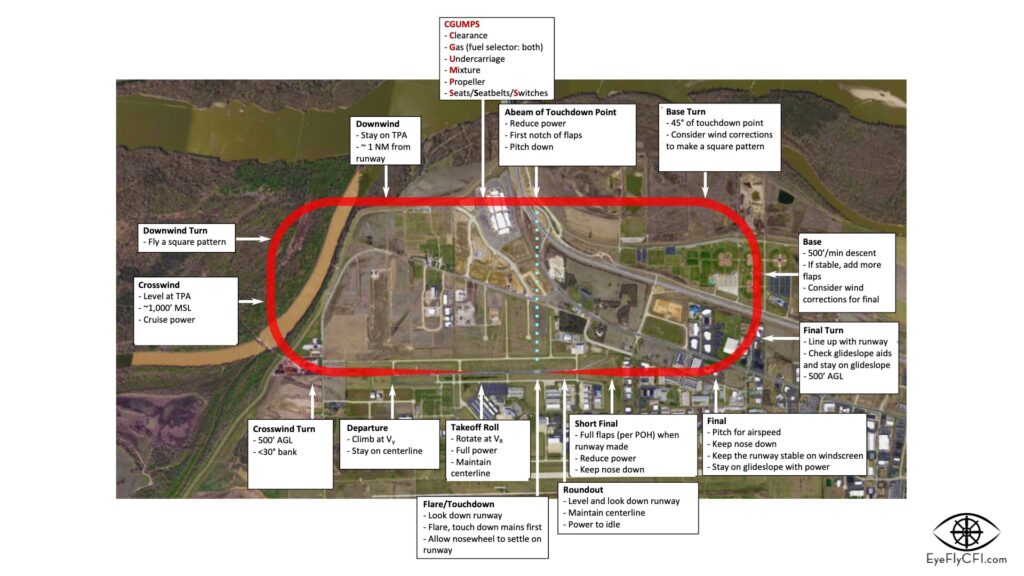Private Pilot Resources
Here you can find resources to help you on your journey to becoming a private pilot. There are certain requirements that must be met, maneuvers that must be logged, and knowledge areas that must be covered as you move from pre-solo → solo → cross country → checkride prep → checkride with a Designated Pilot Examiner (DPE). The resources here can help you track your progress. In my opinion, there is no one resource that is the best in every subject (e.g., King School, Sporty’s etc.) and they all have their strengths. I will share what I feel to be the best resources for each topic.
I will also be continually adding resources to help students grasp concepts that may be confusing at first (e.g., airworthiness) and adding lectures that closely follow CFR § 61.105(b).
First, read through the “Getting Started” section first for help applying for the student pilot certificate and preparing for the knowledge exam.
For context, the major the major certificates are:
Student – You are here
Sport
Private
Commercial
Airline Transport Pilot
Contents
- Private Pilot Overview – General overview of the requirements to be eligible for a private pilot certificate
- Written Exam – You must take the Private Pilot Airplane (PAR) written exam
- Required Knowledge Areas – List of required ground topics, pre-solo maneuvers, and pre-cross country maneuvers
- Ground Lessons – Lessons of the required ground topics
- Maneuvers – Lesson plans and explanations for the private pilot maneuvers
- Cross Country Planning – Tips and resources for successful cross countries
- Tough Concepts – Topics that often confuse students but are certain to appear on the checkride
- Checkride Prep – Resources and tips to help you prepare for your checkride
Private Pilot Overview
Here is a document covering the requirements, general checkpoints, and endorsements necessary for a Private Pilot Certificate.
For more information, consult the relevant parts of the FAR/AIM (this list is not comprehensive and you should always consult the full scope of the regulations to be as safe and prepared as possible):
§ 61.83 Eligibility requirements for student pilots.
§ 61.87 Solo requirements for student pilots.
§ 61.93 Solo cross-country flight requirements.
§ 61.103 Eligibility requirements: General.
§ 61.105 Aeronautical knowledge.
§ 61.107 Flight proficiency.
§ 61.109 Aeronautical experience.
§ 61.117 Private pilot privileges and limitations: Second in command of aircraft requiring more than one pilot.
Written Exam
Before the checkride (the earlier the better, at least before cross country training is recommended) you must take a written exam through PSI that is $175:
- Private Pilot Airplane (PAR, 60 questions, 2.5 hours allotted time)
You need an endorsement for this exam. You can either obtain this after going through the required items with your instructor and keeping a ground log or completing an online course (e.g. King Schools).
For the Private Pilot written exam, I recommend using Sporty’s Study Buddy app. It has essentially all the questions you might see on the actual exam so nothing should be a surprise.
Required Knowledge Areas
Ground Lessons
These lessons are based solely on the following essential resources:
- Pilot’s Handbook of Aeronautical Knowledge (PHAK)
- Airmen Certification Standards (ACS)
- CFR § 61.105(b)
The best resource for student pilots is unarguably the Pilot’s Handbook of Aeronautical Knowledge (PHAK). It is a free resource from the FAA and contains everything you would need to know for your checkride. In this Ground Lesson series, I have compiled the topics from CFR § 61.105(b) (that you need to know according to the regulations) and present the highlights in an intuitive format with references to the PHAK and Airmen Certification Standards (ACS) which is how you will be assessed on the checkride. The presentations contain the highlights. This lecture series is tied closely to CFR § 61.105(b) and the ACS because I strongly believe the better you know the regulations and base things in the FAR/AIM, the better you will do on the checkride.
When I complete this lecture series I will make a single document that contains every item of the ACS pre-flight portion with notes and references to the FARs for easy studying for the oral section. Being able to find the relevant regulation will be of utmost importance on your checkride.
These are the lessons, resources, and documents I use with my students as supplements while I teach them. They are not meant to be a substitute for certified ground or flight training. Always consult with your flight instructor for clarification and before attempting any maneuver/approach.
Lesson 1: Aircraft, Powerplant, Systems, and Aerodynamics
Lesson 2: Regulations and Airworthiness
Lesson 3: Weather
Lesson 4: Airspace
Maneuvers

Cross Country Planning
Planning for cross-countries on paper is an outdated practice but should be done at least once so you develop a good understanding of how the electronic flight bags (e.g., Garmin Pilot or Foreflight) calculate this.
Here is an excel spreadsheet that can speed up the process and will auto-calculate most things for you:

Tough Concepts
Airworthiness
This can be a confusing concept for students. Determining if an aircraft is “airworthy” is ultimately at the discretion of the Pilot in Command (PIC). Here is one way to view airworthiness, like a pyramid.

Traffic Pattern
Good landings begin with good traffic patterns. Here is a rough guide to practice chair flying the pattern.

Checkride Preparation
Preparing for the Oral
The first thing you’ll do with the DPE is prove the aircraft is airworthy. You should sit down with your instructor and tab your logbook and the maintenance logs for the airframe, engine, and propeller (if it has a separate one).
Tab the following in your logbook:
- The long cross country
- The night cross country
- The instrument time
- Your checkride endorsements
Tab the following for the Aircraft:
- The most recent annual
- The most recent 100 hr if applicable
- The most recent transponder check
- The most recent ELT check
- The most recent pitot-static check (although this is not required for VFR flight)
- Any relevant ADs to the aircraft
For the actual oral portion, the best study resource is the Private Pilot Checkride Preparation and Study Guide. The ASA books are always overkill.
Preparing for the Flight Portion:
All you need to prepare for this is time to practice and the Airmen Certification Standards (ACS). This is the document that covers maneuvers you’ll be expected to perform and the standards you should perform them to. As always, aim to do them perfectly and don’t count on the margins of error.
After passing the checkride, you will receive a temporary certificate that allows you to exercise the privileges of a private pilot that is valid for 120 days. You will eventually receive your plastic card in the mail. You must sign the plastic card for it to be valid.
This is often called a “license to learn” and you should consider pursuing additional ratings and endorsements!
Ratings – Require a Checkride:
- Instrument – Allows you to fly in IMC by reference to instruments
- Multi-Engine – Allows you to fly airplanes with more than one engine
- Seaplane – Allows you to fly airplanes that can take off and land on water
Endorsements – Require additional training from a qualified CFI and a logbook endorsement:
- Tailwheel – Allows you to fly tailwheel configured aircraft
- High Performance – Allows you to fly aircraft with an engine with more than 200 horsepower
- Complex – Allows you to fly complex aircraft (e.g., with constant speed propellers)
- High Altitude – Training to fly pressurized aircraft with a service ceiling or maximum operating altitude above 25,000′ MSL
